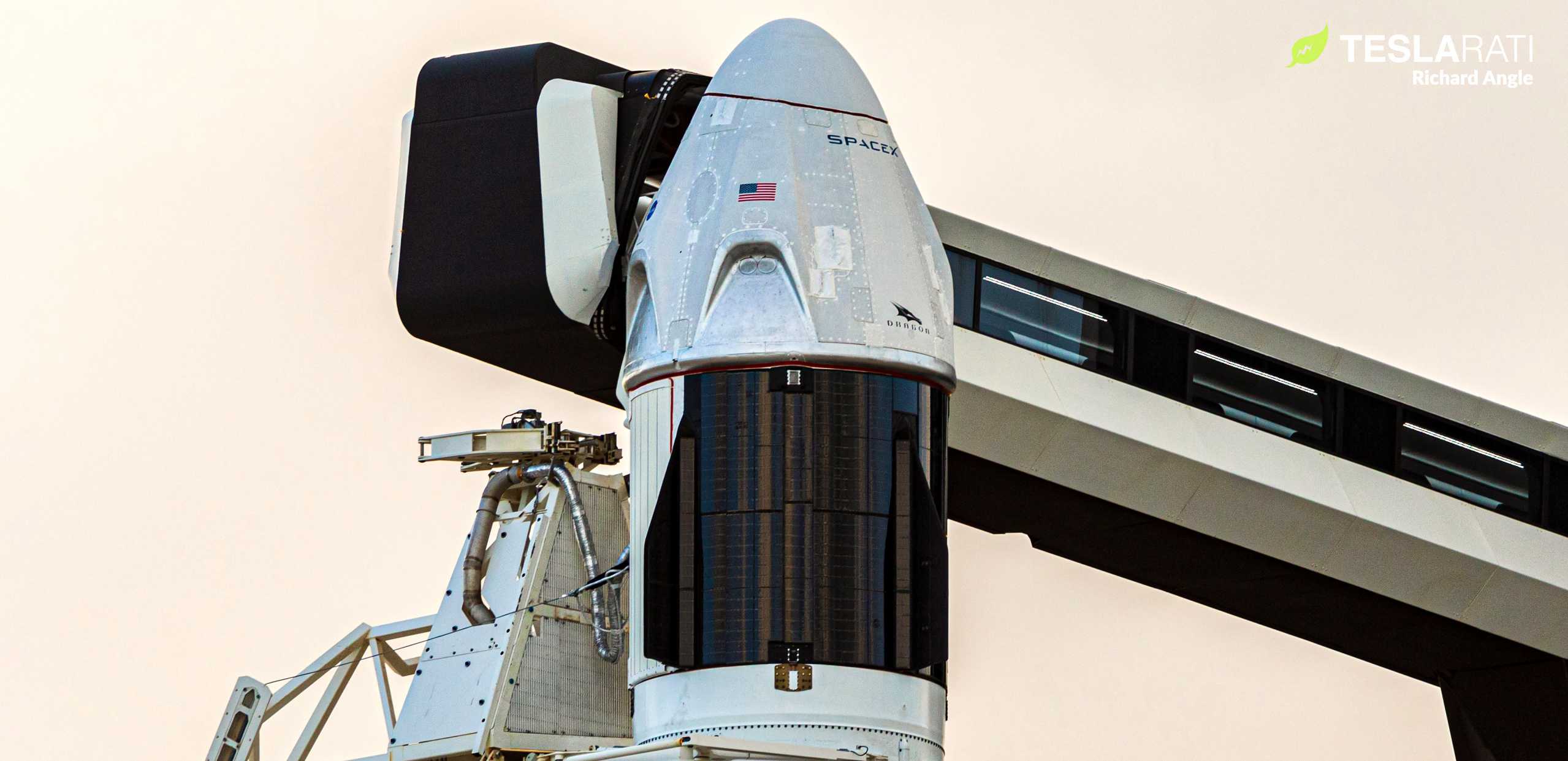

News
NASA has good news after SpaceX Crew Dragon parachute test accident
NASA has good news after SpaceX suffered an accident that destroyed a Crew Dragon mockup before it could complete a parachute test, indicating that the anomaly could have minimal impact on the spacecraft’s Demo-2 astronaut launch debut.
According to NASA, SpaceX and the space agency are still working to launch astronauts on Crew Dragon as early as “mid-to-late May”. While two recent challenges – the loss of the spacecraft’s most important parachute testing mockup and an unrelated in-flight rocket engine failure – could both singlehandedly delay Demo-2 in certain scenarios, NASA continues to state that a May timeframe is still in the cards. This is an excellent sign that both issues – as previously speculated on Teslarati – are probably much less of a problem than they otherwise could be.
As of now, all Demo-2 hardware – including Falcon 9 booster B1058, a new Falcon upper stage, Crew Dragon capsule C206, and an expendable Dragon trunk – are all believed to be in Florida and technically ready for flight. Waiting for launch at and around Kennedy Space Center (KSC) Launch Complex 39A, the long straw for SpaceX’s inaugural astronaut launch is most likely the completion of formal paperwork and reviews, most of which must be done primarily by NASA employees. SpaceX’s latest technical challenges certainly toss some uncertainty into the mix and serve as a reminder that nothing can or should be taken for granted in human spaceflight but on the whole, there is reason for optimism.
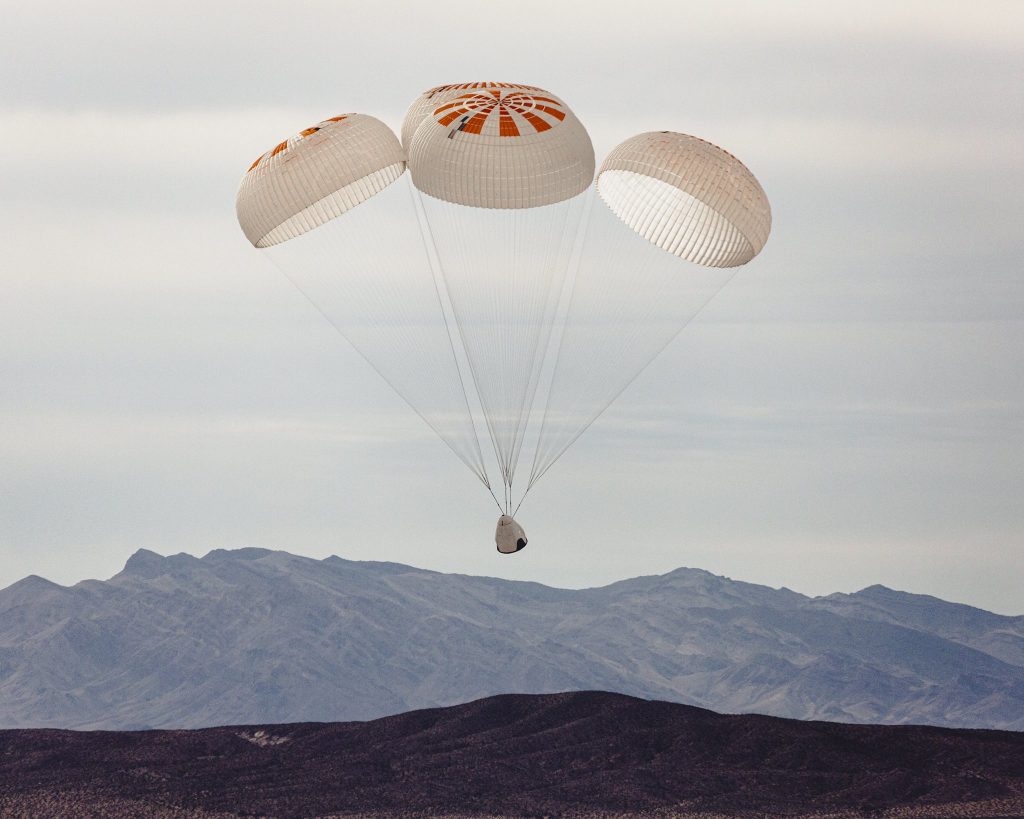
“To date, SpaceX has completed 24 tests of its upgraded Mark 3 parachute design they are working to certify for use on the Crew Dragon spacecraft that will fly NASA astronauts to the International Space Station. The system was used during the SpaceX in-flight abort test in January.
On March 24, SpaceX lost a spacecraft-like device used to test the Crew Dragon Mark 3 parachute design. The test requires a helicopter to lift the device suspended underneath it to reach the needed test parameters. However, the pilot proactively dropped the device in an abundance of caution to protect the test crew as the test device became unstable underneath the helicopter. At the time of the release, the testing device was not armed, and a test of the parachute design was not performed.
Although losing a test device is never a desired outcome, NASA and SpaceX always will prioritize the safety of our teams over hardware. We are looking at the parachute testing plan now and all the data we already have to determine the next steps ahead of flying the upcoming Demo-2 flight test in the mid-to-late May timeframe.”
NASA.gov — March 26th, 2020
While the challenges SpaceX and NASA still have to surmount are thus significant, it’s safe to say that Crew Dragon’s track record more than earns it some optimism as the spacecraft nears the T-1 month mark for what will arguably SpaceX’s most significant launch ever.
Following a successful Pad Abort test in May 2015, the company spent several years working head down. In mid-2018, SpaceX’s first finished Crew Dragon spacecraft successfully passed through electromagnetic interference (EMI) and thermal vacuum (TVac) testing, arriving at the launch site for preflight processing by July. Unfortunately, for unknown reasons, it took more than half a year more for NASA to finally permit Crew Dragon to launch.
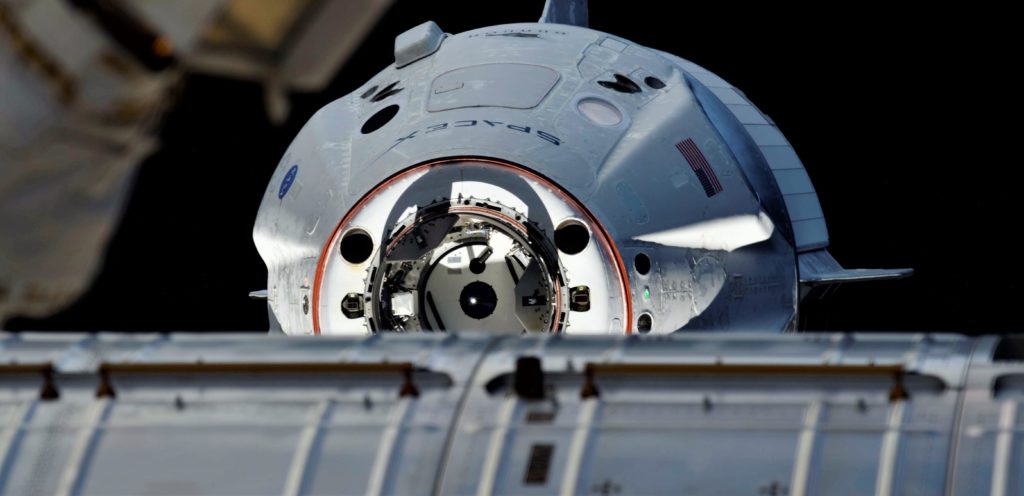

A month and a half after completing an integrated static fire test at Pad 39A, Falcon 9 and Crew Dragon lifted off for the first time ever on March 2nd, 2019. A flawless launch was followed by an equally flawless International Space Station (ISS) rendezvous and docking, completed autonomously and without issue on SpaceX’s first try. Crew Dragon capsule C201 spent five days at the station before autonomously departing, reentering Earth’s atmosphere, and gently splashing down in the Atlantic Ocean under four healthy parachutes.
Altogether, Crew Dragon’s orbital launch debut was such a flawless success that SpaceX’s own director of Crew Dragon mission management stated that he could barely believe how perfectly it went – likely expecting at least something to go slightly awry. That near-perfection certainly didn’t come easily for SpaceX. Boeing – NASA’s second Commercial Crew Program (CCP) partner – has had a far rougher go of things despite the fact that the company does technically have extensive experience building aircraft and rockets.
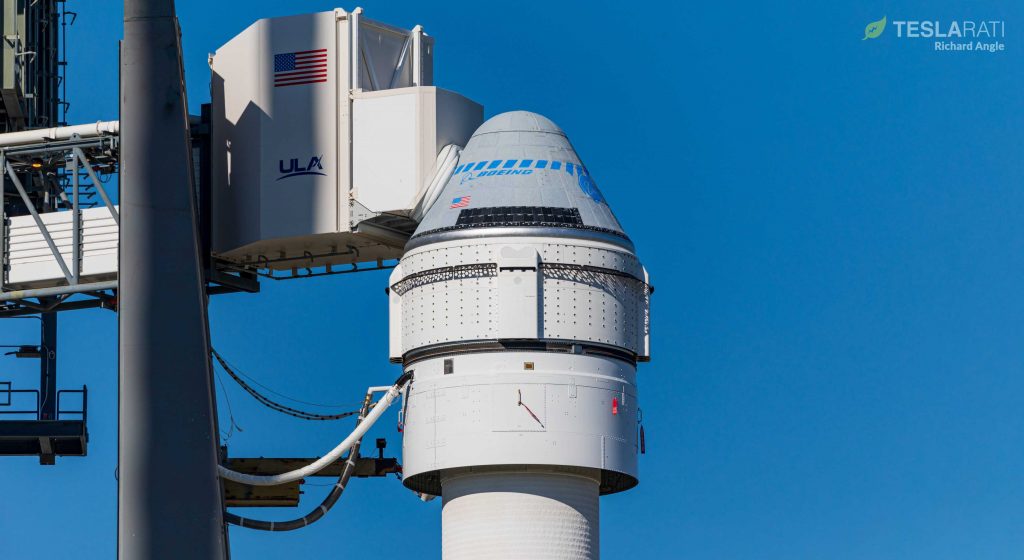
In November 2019, Boeing completed Starliner’s first fully integrated ‘flight’ test in the form of a pad abort. While the spacecraft was able to perform a soft landing, mishandling and bad quality control caused one of its three main parachutes to fail to deploy in an unintentional stress test. A little over a month later, a separate Starliner spacecraft performed its inaugural orbital launch on a ULA Atlas V rocket. From the moment Starliner separated from Atlas V, things began to go wrong. It would ultimately become clear that extremely shoddy software and an almost nonexistent integrated testing regime caused the spacecraft to waste most of its propellant and resulted in an extremely delayed orbital insertion.
While NASA and Boeing both managed to forget a second partial failure until media reporting shed light on it months later, it also turned out that another entirely separate instance of incomplete software may have nearly destroyed Starliner a matter of hours before it was scheduled to reenter Earth’s atmosphere. The spacecraft was ultimately prevented from even attempting a space station rendezvous, one of the major purposes of the test flight.
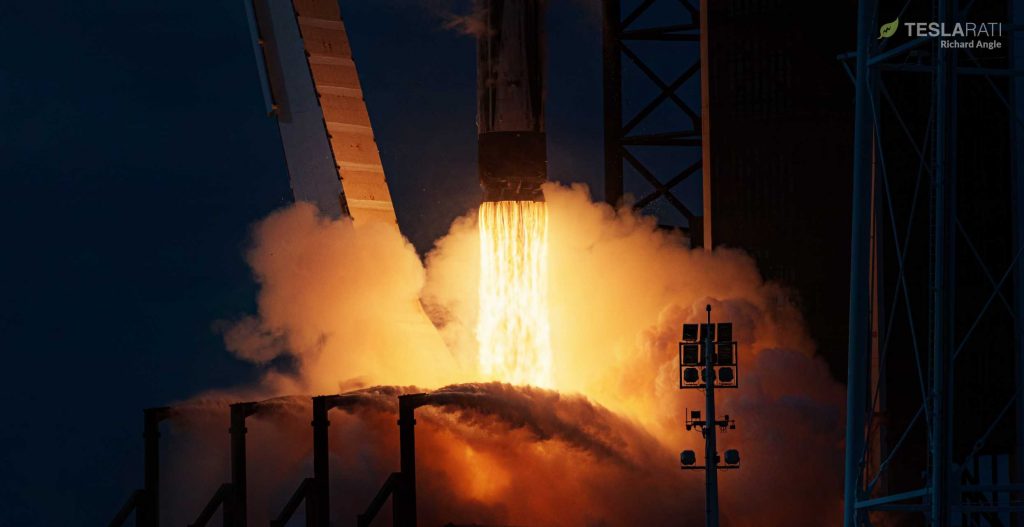

In simpler terms, Crew Dragon – even with the challenges it has and will soon face – is just shy of primed and ready for flight. As always, it’s better to be safe (and late) than sorry in human spaceflight, particularly the first such mission for SpaceX, but it’s looking increasingly likely that Crew Dragon will be on the launch pad and preparing to lift off with NASA astronauts just two or so months from now.
News
Tesla cleared in Canada EV rebate investigation
Tesla has been cleared in an investigation into the company’s staggering number of EV rebate claims in Canada in January.

Canadian officials have cleared Tesla following an investigation into a large number of claims submitted to the country’s electric vehicle (EV) rebates earlier this year.
Transport Canada has ruled that there was no evidence of fraud after Tesla submitted 8,653 EV rebate claims for the country’s Incentives for Zero-Emission Vehicles (iZEV) program, as detailed in a report on Friday from The Globe and Mail. Despite the huge number of claims, Canadian authorities have found that the figure represented vehicles that had been delivered prior to the submission deadline for the program.
According to Transport Minister Chrystia Freeland, the claims “were determined to legitimately represent cars sold before January 12,” which was the final day for OEMs to submit these claims before the government suspended the program.
Upon initial reporting of the Tesla claims submitted in January, it was estimated that they were valued at around $43 million. In March, Freeland and Transport Canada opened the investigation into Tesla, noting that they would be freezing the rebate payments until the claims were found to be valid.
READ MORE ON ELECTRIC VEHICLES: EVs getting cleaner more quickly than expected in Europe: study
Huw Williams, Canadian Automobile Dealers Association Public Affairs Director, accepted the results of the investigation, while also questioning how Tesla knew to submit the claims that weekend, just before the program ran out.
“I think there’s a larger question as to how Tesla knew to run those through on that weekend,” Williams said. “It doesn’t appear to me that we have an investigation into any communication between Transport Canada and Tesla, between officials who may have shared information inappropriately.”
Tesla sales have been down in Canada for the first half of this year, amidst turmoil between the country and the Trump administration’s tariffs. Although Elon Musk has since stepped back from his role with the administration, a number of companies and officials in Canada were calling for a boycott of Tesla’s vehicles earlier this year, due in part to his association with Trump.
News
Tesla Semis to get 18 new Megachargers at this PepsiCo plant
PepsiCo is set to add more Tesla Semi Megachargers, this time at a facility in North Carolina.

Tesla partner PepsiCo is set to build new Semi charging stations at one of its manufacturing sites, as revealed in new permitting plans shared this week.
On Friday, Tesla charging station scout MarcoRP shared plans on X for 18 Semi Megacharging stalls at PepsiCo’s facility in Charlotte, North Carolina, coming as the latest update plans for the company’s increasingly electrified fleet. The stalls are set to be built side by side, along with three Tesla Megapack grid-scale battery systems.
The plans also note the faster charging speeds for the chargers, which can charge the Class 8 Semi at speeds of up to 1MW. Tesla says that the speed can charge the Semi back to roughly 70 percent in around 30 minutes.
You can see the site plans for the PepsiCo North Carolina Megacharger below.

Credit: PepsiCo (via MarcoRPi1 on X)

Credit: PepsiCo (via MarcoRPi1 on X)
READ MORE ON THE TESLA SEMI: Tesla to build Semi Megacharger station in Southern California
PepsiCo’s Tesla Semi fleet, other Megachargers, and initial tests and deliveries
PepsiCo was the first external customer to take delivery of Tesla’s Semis back in 2023, starting with just an initial order of 15. Since then, the company has continued to expand the fleet, recently taking delivery of an additional 50 units in California. The PepsiCo fleet was up to around 86 units as of last year, according to statements from Semi Senior Manager Dan Priestley.
Additionally, the company has similar Megachargers at its facilities in Modesto, Sacramento, and Fresno, California, and Tesla also submitted plans for approval to build 12 new Megacharging stalls in Los Angeles County.
Over the past couple of years, Tesla has also been delivering the electric Class 8 units to a number of other companies for pilot programs, and Priestley shared some results from PepsiCo’s initial Semi tests last year. Notably, the executive spoke with a handful of PepsiCo workers who said they really liked the Semi and wouldn’t plan on going back to diesel trucks.
The company is also nearing completion of a higher-volume Semi plant at its Gigafactory in Nevada, which is expected to eventually have an annual production capacity of 50,000 Semi units.
Tesla executive teases plan to further electrify supply chain
News
Tesla sales soar in Norway with new Model Y leading the charge
Tesla recorded a 54% year-over-year jump in new vehicle registrations in June.

Tesla is seeing strong momentum in Norway, with sales of the new Model Y helping the company maintain dominance in one of the world’s most electric vehicle-friendly markets.
Model Y upgrades and consumer preferences
According to the Norwegian Road Federation (OFV), Tesla recorded a 54% year-over-year jump in new vehicle registrations in June. The Model Y led the charge, posting a 115% increase compared to the same period last year. Tesla Norway’s growth was even more notable in May, with sales surging a whopping 213%, as noted in a CNBC report.
Christina Bu, secretary general of the Norwegian EV Association (NEVA), stated that Tesla’s strong market performance was partly due to the updated Model Y, which is really just a good car, period.
“I think it just has to do with the fact that they deliver a car which has quite a lot of value for money and is what Norwegians need. What Norwegians need, a large luggage space, all wheel drive, and a tow hitch, high ground clearance as well. In addition, quite good digital solutions which people have gotten used to, and also a charging network,” she said.
Tesla in Europe
Tesla’s success in Norway is supported by long-standing government incentives for EV adoption, including exemptions from VAT, road toll discounts, and access to bus lanes. Public and home charging infrastructure is also widely available, making the EV ownership experience in the country very convenient.
Tesla’s performance in Europe is still a mixed bag, with markets like Germany and France still seeing declines in recent months. In areas such as Norway, Spain, and Portugal, however, Tesla’s new car registrations are rising. Spain’s sales rose 61% and Portugal’s sales rose 7% last month. This suggests that regional demand may be stabilizing or rebounding in pockets of Europe.
-

 Elon Musk2 weeks ago
Elon Musk2 weeks agoTesla investors will be shocked by Jim Cramer’s latest assessment
-

 Elon Musk2 days ago
Elon Musk2 days agoxAI launches Grok 4 with new $300/month SuperGrok Heavy subscription
-

 Elon Musk4 days ago
Elon Musk4 days agoElon Musk confirms Grok 4 launch on July 9 with livestream event
-

 News1 week ago
News1 week agoTesla Model 3 ranks as the safest new car in Europe for 2025, per Euro NCAP tests
-

 Elon Musk2 weeks ago
Elon Musk2 weeks agoA Tesla just delivered itself to a customer autonomously, Elon Musk confirms
-

 Elon Musk1 week ago
Elon Musk1 week agoxAI’s Memphis data center receives air permit despite community criticism
-

 News2 weeks ago
News2 weeks agoXiaomi CEO congratulates Tesla on first FSD delivery: “We have to continue learning!”
-

 Investor's Corner2 weeks ago
Investor's Corner2 weeks agoTesla gets $475 price target from Benchmark amid initial Robotaxi rollout

















